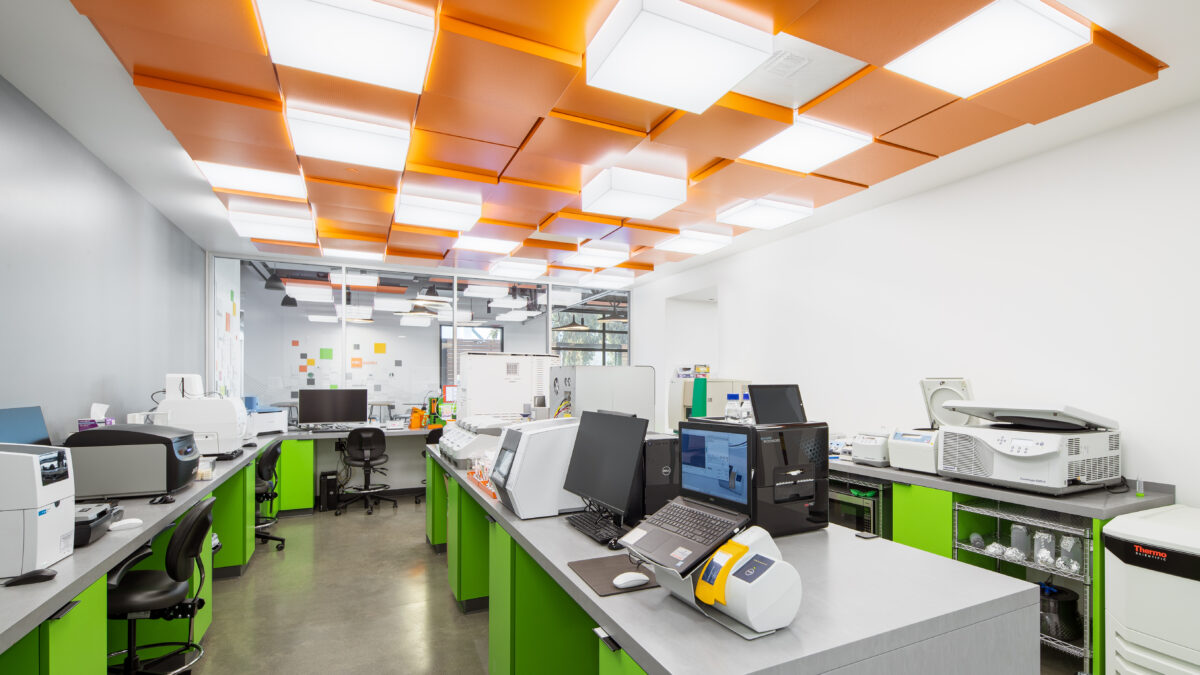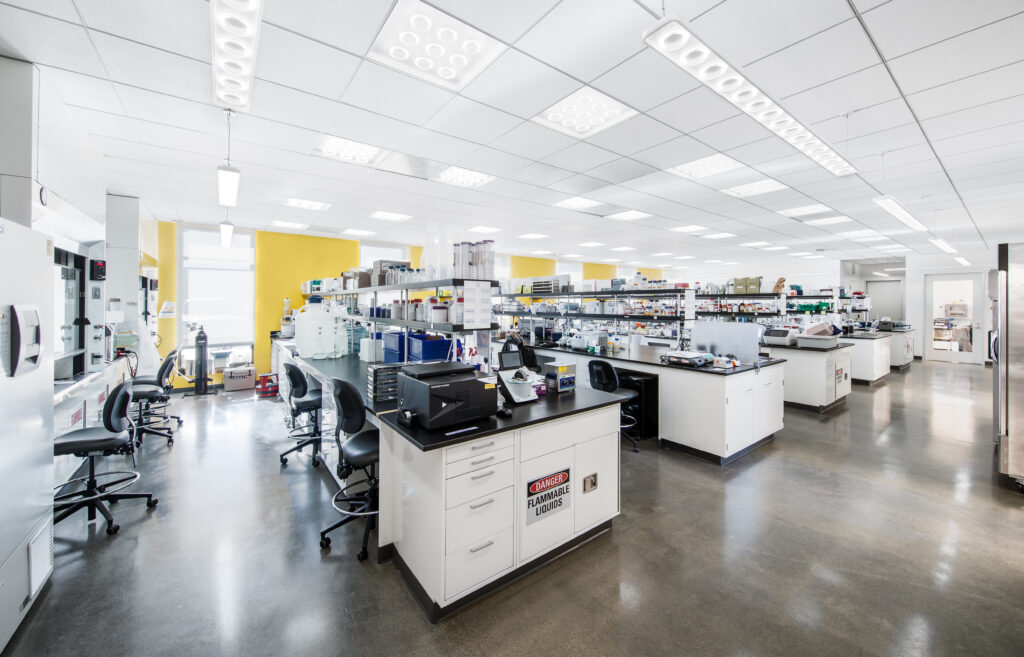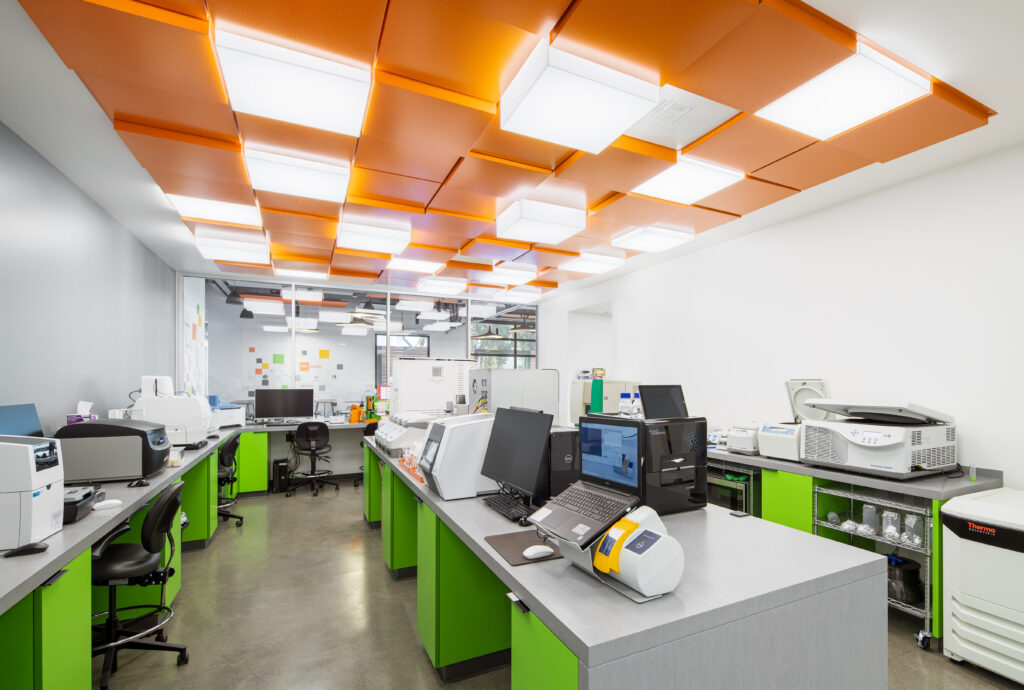Designing wet labs vs. dry labs: Enhancing flexibility and collaboration in research facilities


By Eddie Hall, senior project architect and senior associate, MBH Architects — October 23, 2023 — Research and innovation are the driving forces behind scientific progress, and the design of laboratory spaces plays a pivotal role in facilitating groundbreaking discoveries. Two common types of laboratory spaces, wet labs and dry labs, serve distinct purposes and require different design considerations. While wet labs focus on experiments involving liquids and chemicals, dry labs primarily deal with computational and theoretical research. In this article, we will delve into the major design differences between wet lab and dry lab spaces and explore strategies to enhance flexibility and collaboration in these critical research environments.
- Infrastructure and Equipment:
- Wet Labs: These labs require careful layout for functional equipment, hoods, workbench relationships, and specialized infrastructure to handle plumbing, drainage, and ventilation. Bench space, fume hoods, and storage for hazardous materials are central to wet lab design. Robust backup power to keep critical systems operational during power outages is common.
- Dry Labs: Infrastructure for data connectivity, computational equipment, and ergonomic workstations and a mix of workspaces take precedence. Dry labs demand ample power supply, efficient cooling systems, and network infrastructure to support high-performance computing.
- Ventilation and Safety:
- Wet Labs: Significant ventilation systems are critical to remove hazardous fumes and ensure air quality. These systems are typically single pass air. Depending on the biological safety level requirements (BSL) of a given facility, various emergency response systems and sanitation features using pressure differentials, airlocks, and clean rooms as safety protocols are imperative both for life safety and to avoid sample contamination.
- Dry Labs: While safety remains paramount, the focus shifts to fire prevention and electrical safety. Adequate airflow and cooling systems are essential to manage heat generated by computational equipment.
- Flexibility and Modular Design:
- Wet Labs: Depending on the nature and scale of the work and the common need for specialized equipment, wet labs often benefit from modular design with adaptable bench configurations to accommodate changing research requirements. Ceiling-mounted infrastructure panels, known as overhead service carriers, offer maximum flexibility and keep floors clear of penetrations from inert gasses, vacuum systems, and electrical or data connections.
- Dry Labs: Flexibility is achieved through modular furniture and adjustable workstations that cater to various research needs. A mix of private team spaces and open floor plans with movable partitions enhance the adaptability of the space. Modern dry lab facilities benefit from a range of working spaces for various team sizes and operational needs.
- Collaborative Spaces:
- Wet Labs: Open lab and private lab spaces mirror the open and private model on the dry side; however, true clean-side collaboration spaces become worth consideration for the higher BSL design criteria, where travel in and out of controlled areas is onerous. For lower BSL design, the visual and physical connection of the wet side to the dry lab helps the spaces feel more integrated.
- Dry Labs: Collaboration is seamlessly integrated into the design through open-plan layouts, breakout areas, and interactive spaces equipped with video conferencing technology.
- Shared Amenities:
- Incorporate communal amenities such as lounges, cafes, and informal meeting spaces to encourage spontaneous interactions and idea exchange.
- For workshare models, concierge and equipment supply spaces, assigned cold storage spaces, and core tool, tissue culture and autoclave rooms are all essential.
- Forward-facing spaces for business development and presentations and even industry events are a critical component in incubator and graduate labs or larger platform lab facilities that are part of a cluster model.
- Technical Integration:
- Similar to any modern office environment, advanced audiovisual and teleconferencing systems work to bridge communication gaps among researchers in different locations.
- Natural Elements:
- Today’s lab facilities are no longer harsh and unappealing environments. By incorporating natural light, greenery, and biophilic design elements into collaboration and amenity filled spaces, we can create a more inviting and comfortable environment, promoting well-being and creativity and attracting the talent the life science industry needs, since those working in the industry, like any of us, want to enjoy the workspace they spend so much time in.

Designing wet labs and dry labs involves distinct considerations tailored to the unique requirements of each type of research. By strategically incorporating flexibility, collaboration-enhancing features, and shared amenities, research facilities can create dynamic environments that encourage seamless transitions between wet and dry research, fostering a sense of community, innovation, and scientific advancement. As research continues to evolve, the symbiotic relationship between the design of these labs and the research conducted within them will shape the future of scientific progress and discovery.

About Eddie Hall, senior project architect and senior associate
Eddie Hall, AIA is a senior project architect and senior associate at MBH Architects, a multidisciplinary firm headquartered in the San Francisco Bay Area.
He joined the firm in 2010, bringing a history of hands-on experience paired with enthusiasm for design and craftsmanship, emerging material technologies, and digital design practices. As a member of MBH’s Urban Studio, Eddie leads some of the firm’s most complex and challenging projects, working to deliver world-class laboratory projects.
